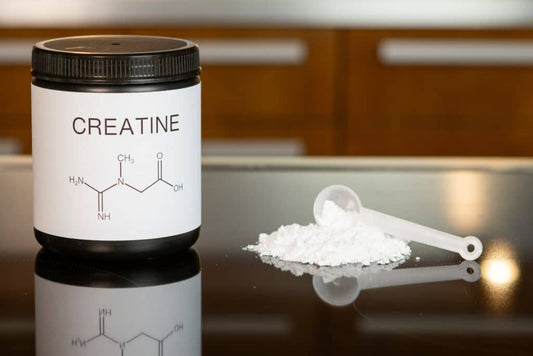Red Light Therapy for Post-COVID Inflammation

Red light therapy (RLT), also known as photobiomodulation therapy, has emerged as a promising treatment for post-COVID inflammation. This noninvasive, safe, and affordable method involves brief exposure to red or infrared light, and it is gaining traction among leading medical providers for treating various inflammatory conditions. In this article, we delve into the scientific overview, recommended dosing, mechanisms of action, potential medical uses, safety considerations, and the option of at-home devices for red light therapy.
Scientific Overview
RLT operates on the principle of photobiomodulation, where the absorption of red/near-infrared light energy enhances mitochondrial ATP production, cell signaling, growth factor synthesis, and counters oxidative stress. Research has demonstrated a marked reduction in the inflammatory response pathway, a key factor in the onset of cytokine storms observed in COVID-19 patients. Infrared light exposure resulted in significant declines in inflammatory gene activity and secreted cytokines, with observable changes after just 48 hours of treatment.
The National Institutes of Health (NIH) recommends therapeutic dosing within red light intensity ranges of 6 to 18 W/m2 for optimal anti-inflammatory outcomes. Doses at 6 W/m2 intensity for 10 minutes twice a day have proven effective at the cellular level, with higher doses exhibiting no harmful effects. This underscores the safety and potential of red light therapy in addressing inflammatory conditions.
Pros and Cons of Red Light Therapy
Pros:
- Noninvasive and safe.
- Affordable compared to some treatments.
- Scientifically proven to reduce inflammation.
- Mitigates oxidative stress and promotes cellular energy production.
Cons:
- Limited coverage by health insurance.
- Ongoing treatments required, potentially leading to significant time and cost.
- Variable results based on skin type and individual differences.
- Lack of regulation in at-home devices, varying in power and effectiveness.
Mechanisms of Action
Red light therapy primarily targets mitochondria, the "power plants" of cells, boosting energy production and enhancing various cellular processes. This stimulation results in improved skin repair, increased cell growth, and enhanced skin rejuvenation. The therapy is thought to reduce inflammation, increase blood circulation, stimulate collagen and fibroblast production, offering benefits for skin health and conditions such as wrinkles, scars, and acne.
Medical Conditions Treated with Red Light Therapy
Red light therapy has shown promise in treating a spectrum of medical conditions, including multiorgan inflammatory syndrome (MIS-A, MIS-C), anxiety, depression, chemotherapy side effects, pain associated with various conditions, prevention of recurring cold sores, Alzheimer's, hair growth, dental issues, arthritis, wound healing, and various skin conditions such as psoriasis, rosacea, eczema, and stretch marks.
Safety Considerations
Red light therapy is generally considered safe when used as directed, with no associated side effects in the short term. However, misuse can potentially lead to skin or eye damage. It's crucial to consult a healthcare professional or qualified therapist, especially when considering at-home devices. While these devices are generally safe, they may have lower wavelength frequencies compared to those used by medical professionals.
At-Home Devices: A Safe and Reasonable Option?
At-home red light therapy devices are widely available, providing a convenient option for users. However, consumers should be aware that these devices may have lower power than those used in medical settings. Shielding the eyes during use and following proper usage instructions are imperative to prevent any adverse effects. Additionally, caution is advised when opting for treatments at beauty spas, salons, saunas, tanning salons, gyms, or wellness centers, ensuring the credibility of the provider.
Variables to Consider
Several variables come into play when contemplating red light therapy:
- - Coverage by health insurance: Typically not covered, requiring out-of-pocket expenses.
- - Number of treatments: Ongoing treatments, potentially for weeks or months.
- - Desired results: Varying outcomes based on individual differences and device wavelength.
- - Provider trust: Consider the experience and qualifications of the person providing the therapy.
- - Appropriateness for the condition: Consult a healthcare professional for diagnosis and treatment recommendations.
Conclusion
Red light therapy holds promise as an effective and safe treatment for post-COVID inflammation and various medical conditions. While it has shown positive results, it's essential to approach it with a well-informed perspective. Consulting a healthcare provider before embarking on red light therapy ensures personalized advice and the exploration of alternative treatments if deemed more suitable. The evolving landscape of this therapy warrants ongoing research and consideration of its potential in diverse medical applications.
Key Takeaways:
- - Red light therapy is a scientifically proven and safe treatment for post-COVID inflammation and various medical conditions.
- - The therapy's mechanisms involve enhancing mitochondrial function, promoting cellular processes, and reducing inflammation.
- - At-home devices are available but may have lower power; caution and adherence to instructions are crucial.
- - Consultation with a healthcare professional is recommended to determine appropriateness, safety, and potential outcomes for individual cases.
Science Based References
Photobiomodulation: The Clinical Applications of Low-Level Light Therapy - PubMed (nih.gov)
Red Light Therapy: Benefits, Side Effects & Uses (clevelandclinic.org)



